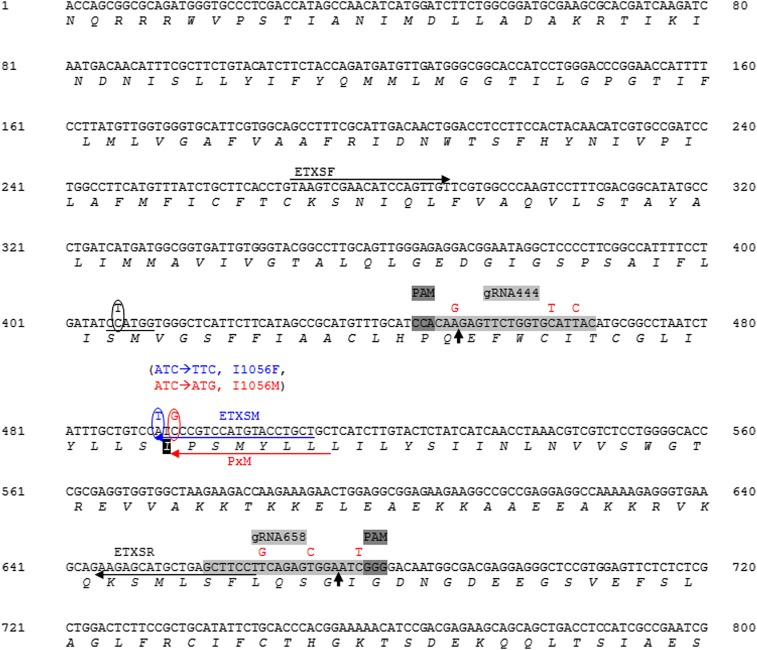Fig. S5.
Nucleotide and deduced amino acid sequence of an 800-bp fragment of kkv exon 6 (corresponding to 3R:5381406:5382206 at the BDGP6 genome assembly), flanking position 1056 of the D. melanogaster amino acid sequence (I, shown in black background), equivalent to 1042 in Plutela xylostella and 1017 in T. urticae. Light gray areas indicate the CRISPR/Cas9 targets selected (gRNA444, gRNA658), whereas dark gray areas indicate the corresponding PAM (–NGG) triplets. Vertical arrows denote break points for CRISPR/Cas9-induced double stranded breaks. Ovals mark differences between target (wild-type) and donor (genome modified) sequences (red for I1056M and blue for I1056F). A C→T synonymous transition common for both designs at position 407 abolishes an NcoI cleavage site (CCATGG, underlined); an A→T transversion at position 492 generates a codon alteration (ATC→TTC) that results in the I1056F mutation, whereas a C→G transversion at position 494 generates a different codon alteration (ATC→ATG) that results in the I1056M mutation. Six extra synonymous mutations present at the CRISPR targets in the I1056M design are shown in red letters. Horizontal arrows indicate the relative positions of the primers used for diagnostic screening [ETXSF, ETXSR, ETXSM (blue, specific for I1056F), and PxM (red, specific for I1056M); see Table S2].

